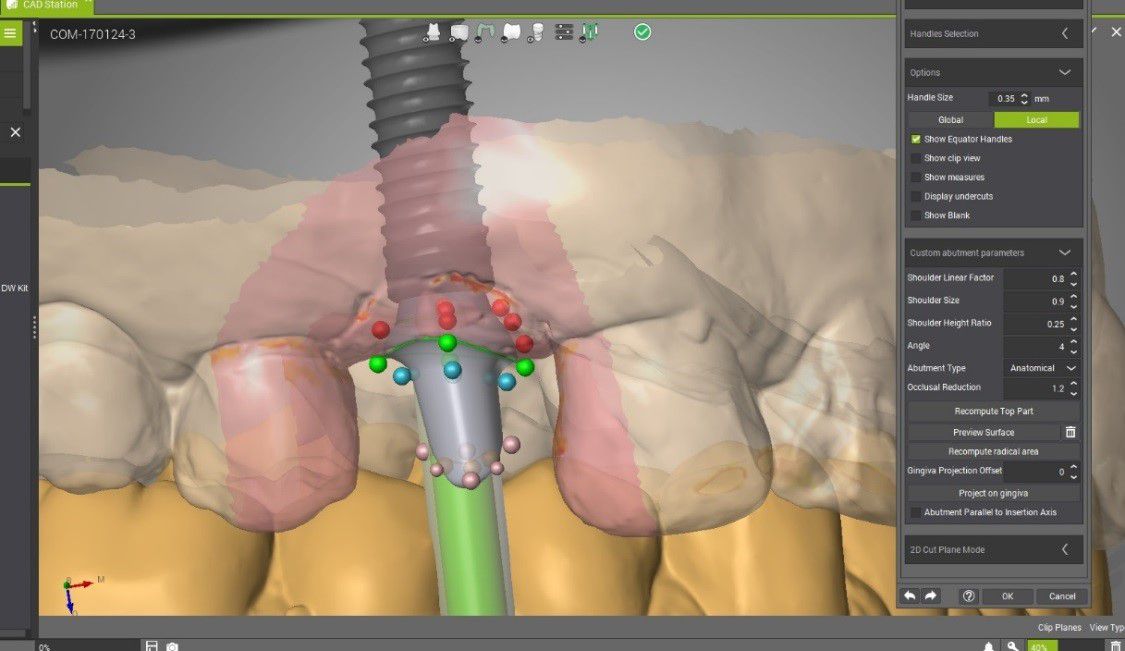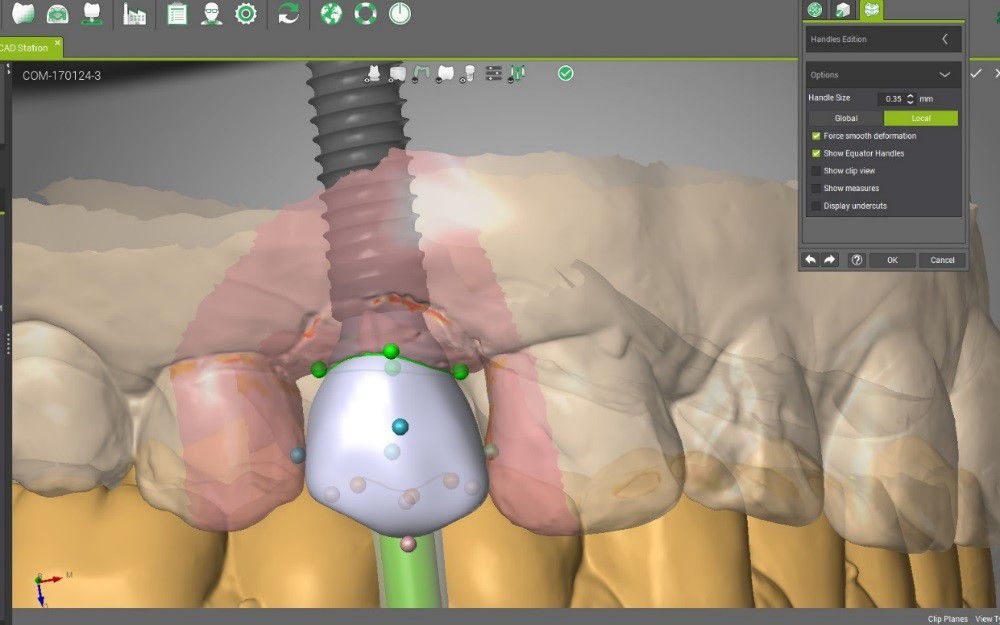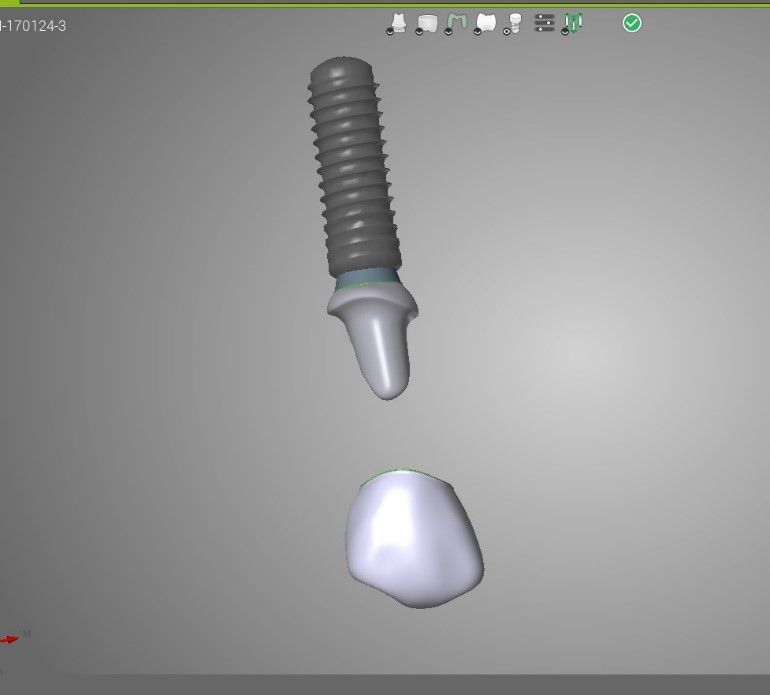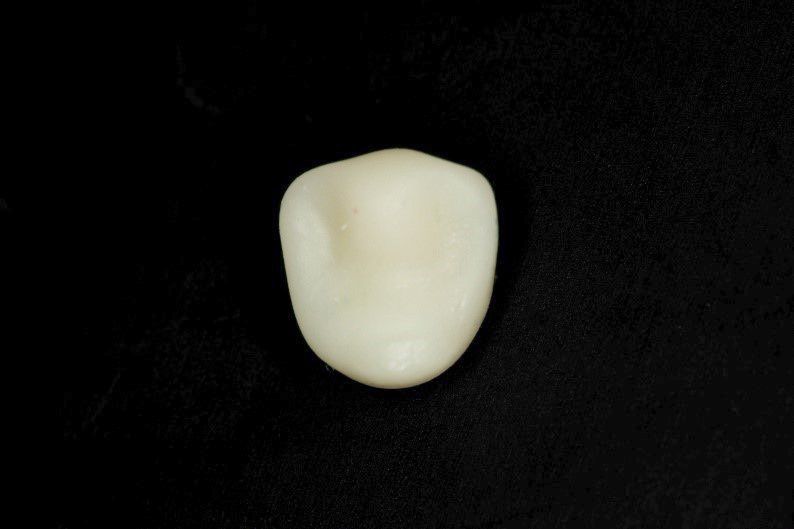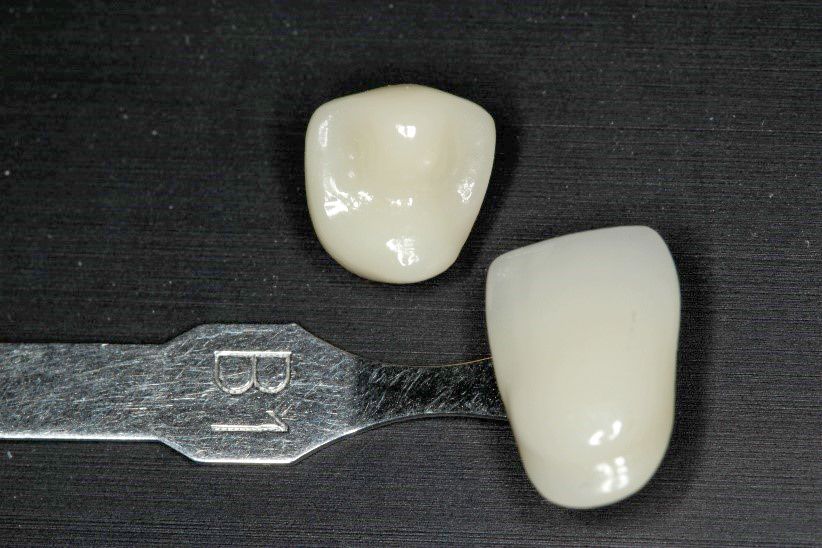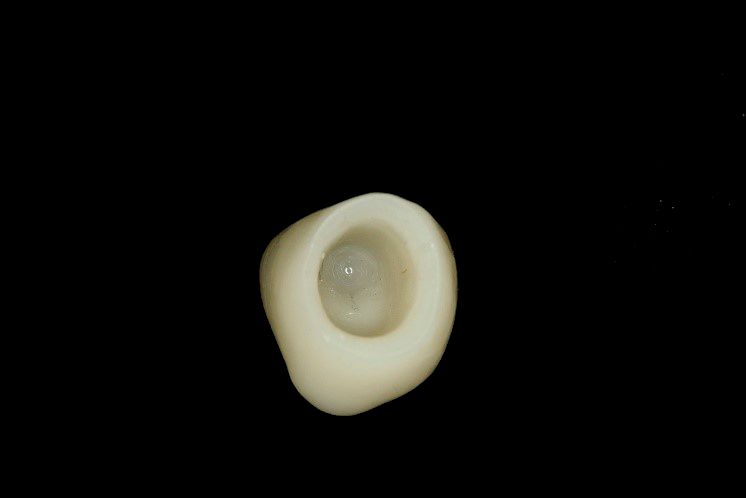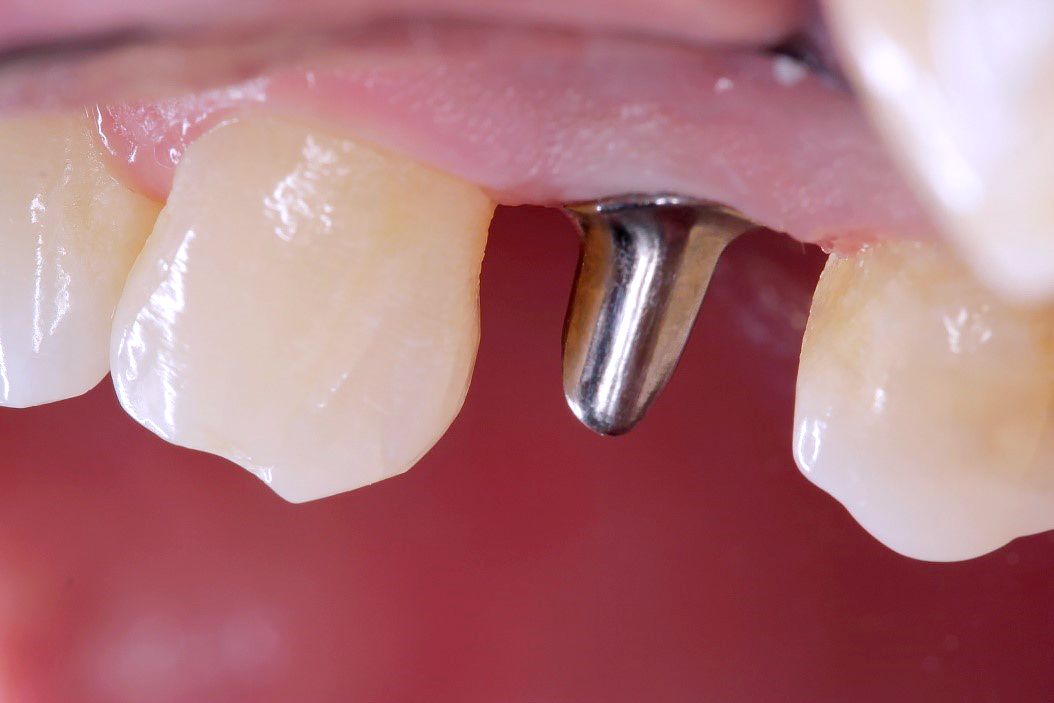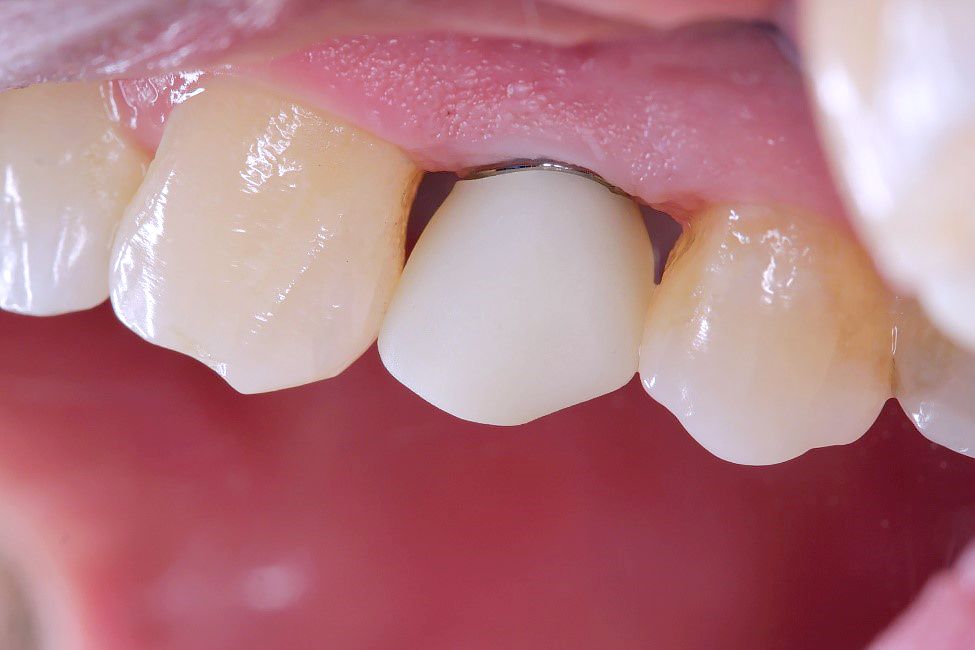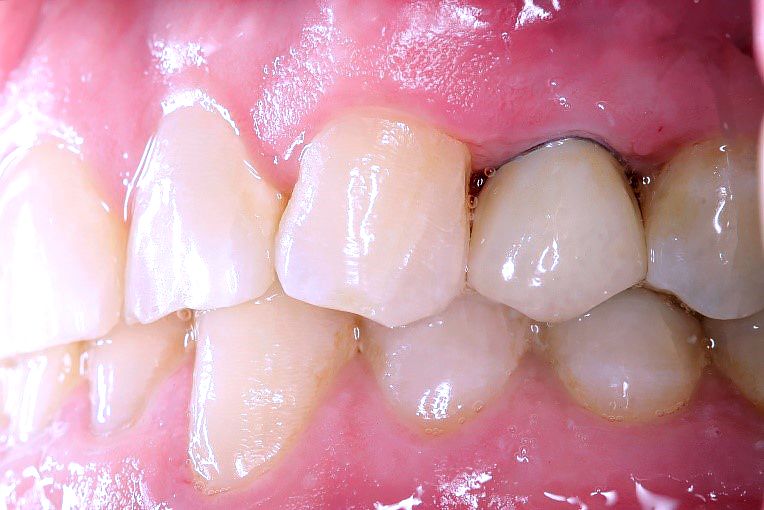Application of the Straumann® n!ce™ glass ceramic material for a single crown restoration in the maxilla
A clinical case report by Stefanie Seitz, USA
“This case utilizing n!ce™ was, in fact, nice. It achieved an excellent clinical result, and more restorations, including traditional fixed restorations, are planned for the future.” Dr. Stefanie Seitz
Case Report
A 51-year-old Caucasian male, non-smoker in good general health presented to the clinic for restoration of #5 with a Straumann® Bone Level RC implant. The patient presented with a low smile line, thick keratinized tissue and moderate esthetic concerns. It was decided that a cement-retained n!ce™ restoration on a custom abutment would be used as the final restoration. The n!ce™ material is a lithium disilicate strengthened lithium aluminosilicate glass-ceramic, and was chosen due to its excellent mechanical properties and esthetics.
Prosthodontic procedure
During the initial appointment, the final impression was made utilizing the open tray technique, and a soft tissue cast was subsequently fabricated. The master cast was then digitally scanned and imported into Straumann® CARES®, where both the custom abutment and final crown were designed using the X-Stream® (Straumann) workflow (Figs. 1-3). Both designs were sent to the Straumann milling center in Arlington, Texas for production. After fabrication, n!ce™ has a dull, opaque appearance (Fig. 4). However, once the material is polished, the esthetics become greatly enhanced, and the restoration acquires a more lifelike appearance and better matches the selected shade (Fig. 5). Close examination of the restoration revealed accurately milled margins without any chipping or fractures (Fig. 6). At the second appointment, the abutment was placed, with the final screw torqued to 35Ncm following the manufacturer’s directions (Fig. 7). Teflon tape and composite were used to cover the screw channel. The n!ce™ crown was then tried in and required slight interproximal and occlusal adjustments, although the internal fit was perfect (Fig. 8). After polishing, it was decided to add some characterization to better blend in with the adjacent teeth. Comparing the initial unfinished crown with the final crown demonstrates that this material’s inherent esthetic qualities allowed for minimal finishing and polishing to accomplish the desired result (Fig. 9). The final restoration was cemented to the abutment using a resin-modified glass ionomer cement. The patient was very pleased with the fact that the metal abutment could not be visualized through the crown and commented on its natural appearance.
Result
The esthetic properties of n!ce™ clearly make it a desirable material for restorations due to its display of natural-looking translucency while masking the grey of the underlying abutment. Additional properties make it even more desirable, including the fact that no additional sintering/crystallization firing of the restoration is required, decreasing the total amount of time needed to finish it prior to delivery. This is a huge advantage when considering that this material is available for chairside milling in private offices. In addition, this material is simple and quick to polish, or it can be stained and glazed to enhance the esthetics. This case utilizing n!ce™ was, in fact, nice. It achieved an excellent clinical result, and more restorations, including traditional fixed restorations, are planned for the future.

